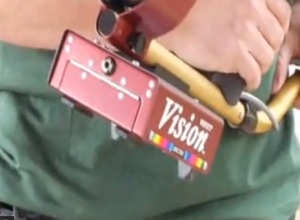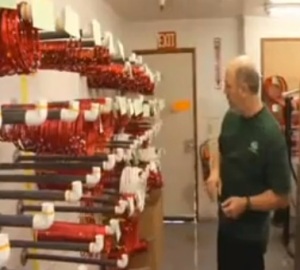Exclusive Interview with Carl Moreland (Engineering Manager – White’s Electronics)

After interviewing him together with George Overton, as co-author of the book “INSIDE THE METAL DETECTOR” (click HERE to read the interview), we’re again with one of the most famous key figure of the international metal detecting scene: Carl Moreland (CM in the text).
Carl, White’s Electronics’ Engineering Manager, is also known to have founded (and he still administrate it together with George Overton) a site called GEOTECH1.com where everyday thousands of detecting electronics enthusiasts, self-constructors and simple tech-curious people meet and share informations.
In the interview, I’m sure you will notice that some of my questions were already asked to Eng. Kanev from Detech and Steve Moore from Garrett. My will was to obtain personal answers to common questions on most popular issues, that’s all…
Before leaving you to the interview, I’d like to thank again Carl for his kindness and also Massimo/”Gladiatore” for helping me with the translations for the Italian edition of the article.
Leonardo/”Bodhi3″
Director AMDTT
——-
LC: Hello Carl! Thanks for making you availble for this interview. Can you tell us something about your previous academic and professional experiences and how you’ve got in contact with White’s Electronics?
CM: Master’s/EE Florida State University; 18 years with Analog Devices designing IC’s for high speed ADCs, opamps, and GSM communications; 3 years with Maxim designing reference systems for cellular and ultrasound; I answered an employment ad for White’s.
LC: As far as we know, White’s main factory is based in Sweet Home, Oregon, USA. Do the Inverness’ plant also partecipate to the development and design of new models?
 CM: Sweet Home consults Inverness on new product designs, and Inverness does some designs independent of the Sweet Home facility.
CM: Sweet Home consults Inverness on new product designs, and Inverness does some designs independent of the Sweet Home facility.
LC: White’s models were always considered the best detectors for discrimination. Is this feature a real fundamental topic in your design strategy or is just a “side-effect” of your ordinary engineering process when developing a detector?
CM: It is definitely a primary concern in our design process. We recognize that all the easy targets are gone, and what is left is largely hidden amongst buried trash.
LC: A lot of our readers asked us if White’s will introduce a new submersible VLF multi-frequency machine. Are you planning something like a (Salt)WaterProof Spectra V3i, in the near future?
CM: I can’t comment specifically on current projects, but we are working on both new packaging and new circuitry that will combine to make some nice products. I can say that our traditional metal boxes are at the end of the line.
LC: When the Spectra V3i model came out, we Italians felt a little bit disappointed for the lack of Italian language in the menus. Will the next-generation machine include more languages and Italian too?

CM: Italian barely missed the cut, mainly because of time and memory limitations. But, yes, we are going to work on broadening our appeal through better language support.
LC: I’m asking to different engineers from major detector manufacturer if they think that current models, based on technology like VLF and Pulse Induction, are actually reaching their theoretical limits. Do you think there’s some more to be done on that before switching to a different technology?
CM: Single-frequency VLF is hitting practical depth limitations. Multi-frequency still has quite a bit of life left in it, especially in the realm of better signal processing for ground rejection and target ID. PI has barely gotten started.

LC: Latest top-of-the-line metal detectors are now featuring USB connections that allow easy firmware updates. Will the next models introduce this valuable feature?
CM: I would expect graphical interface models to have this feature. It’s a bit more difficult to do with units that have a segmented display, or no display at all.
LC: Will we ever see an “Open Source” detector made by White’s, where the internal software could be modified, enhanced and uploaded by users, as it happens with Android smartphones?

CM: The engineering resources required to make this work well is probably beyond what White’s can provide. Any given Smartphone has a massive design team behind it, with a multi-million dollar budget and expected sales of a $billion or more. We’re not in that league. However, we may implement a subset, such as the ability to load in a language module, including a language module that is authored by an independent developer.
LC: Recently some specialized companies produced man operated hybrid machines Metal Detector+Ground Penetrating Radar (GPR), that are now used in military or humanitarian demining. Do you actually think they could fall into the hobbyist market with some low-end versions? Are you working on that too?

CM: I doubt it. GPR isn’t the panacea some people envision it to be. Everyone would like to be able to read the date on a coin before they dig it up, but GPR can’t really tell the difference between a coin and a rock. We’re a long, long way from any kind of consumer-level imaging detector.
LC: What are White’s immedate future plans? What we should expect from you in the near future?
CM: Hmmm…. new detector models! But seriously, I can only pass along vague generalities… we are engaged in a variety of technolgies including single frequency, multi-frequency, and some pretty advanced time-domain methods.
LC: Thank you very much Carl! It was such a pleasure to host you on our blog!
CM: My pleasure!